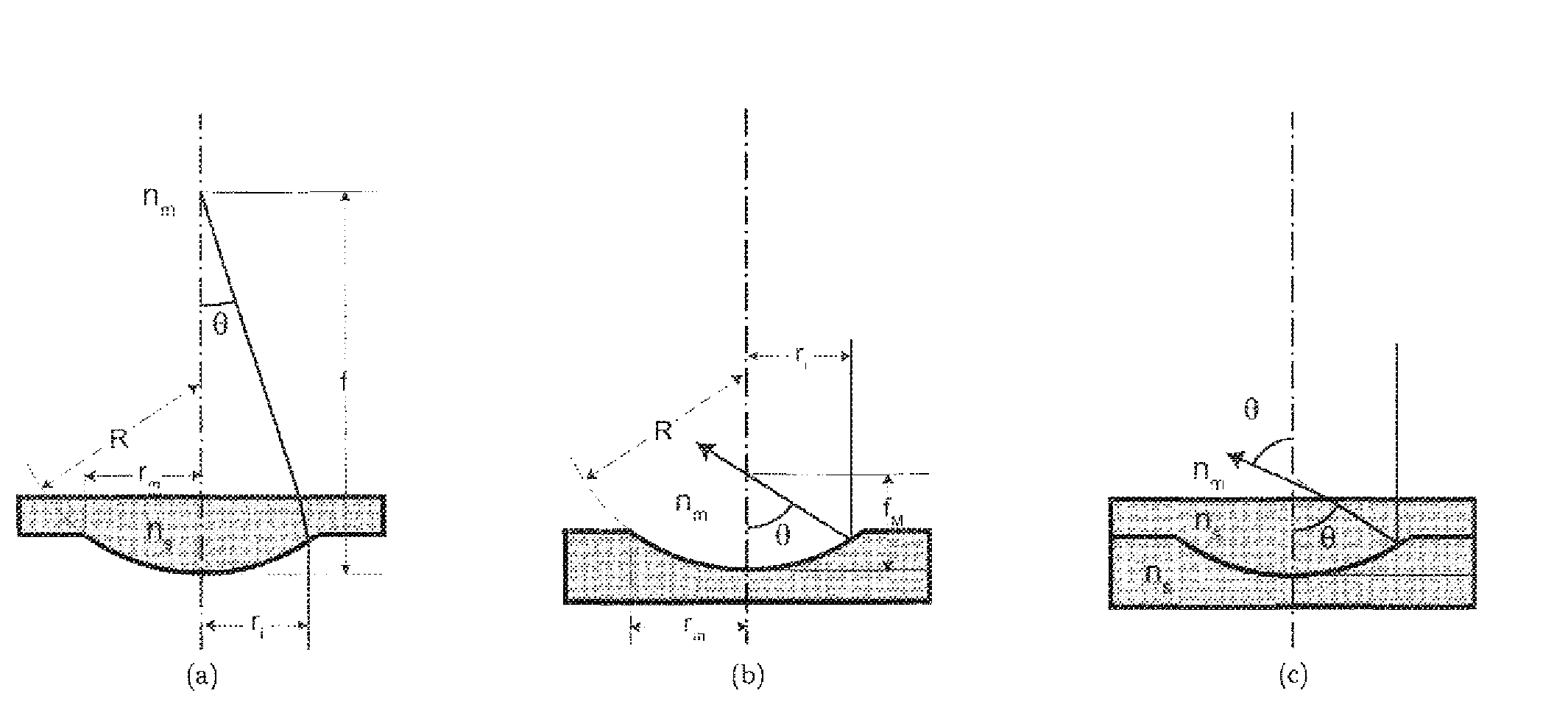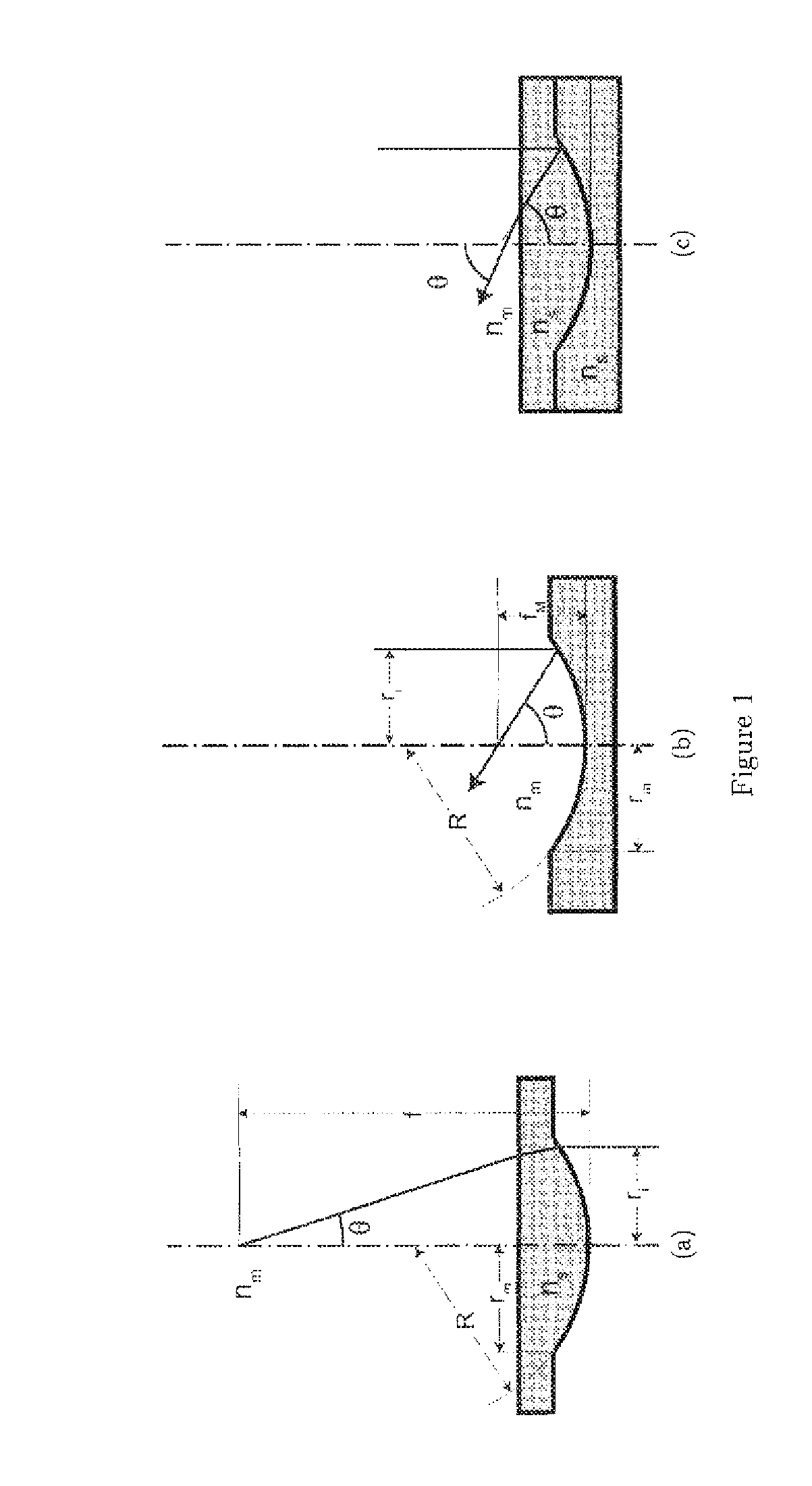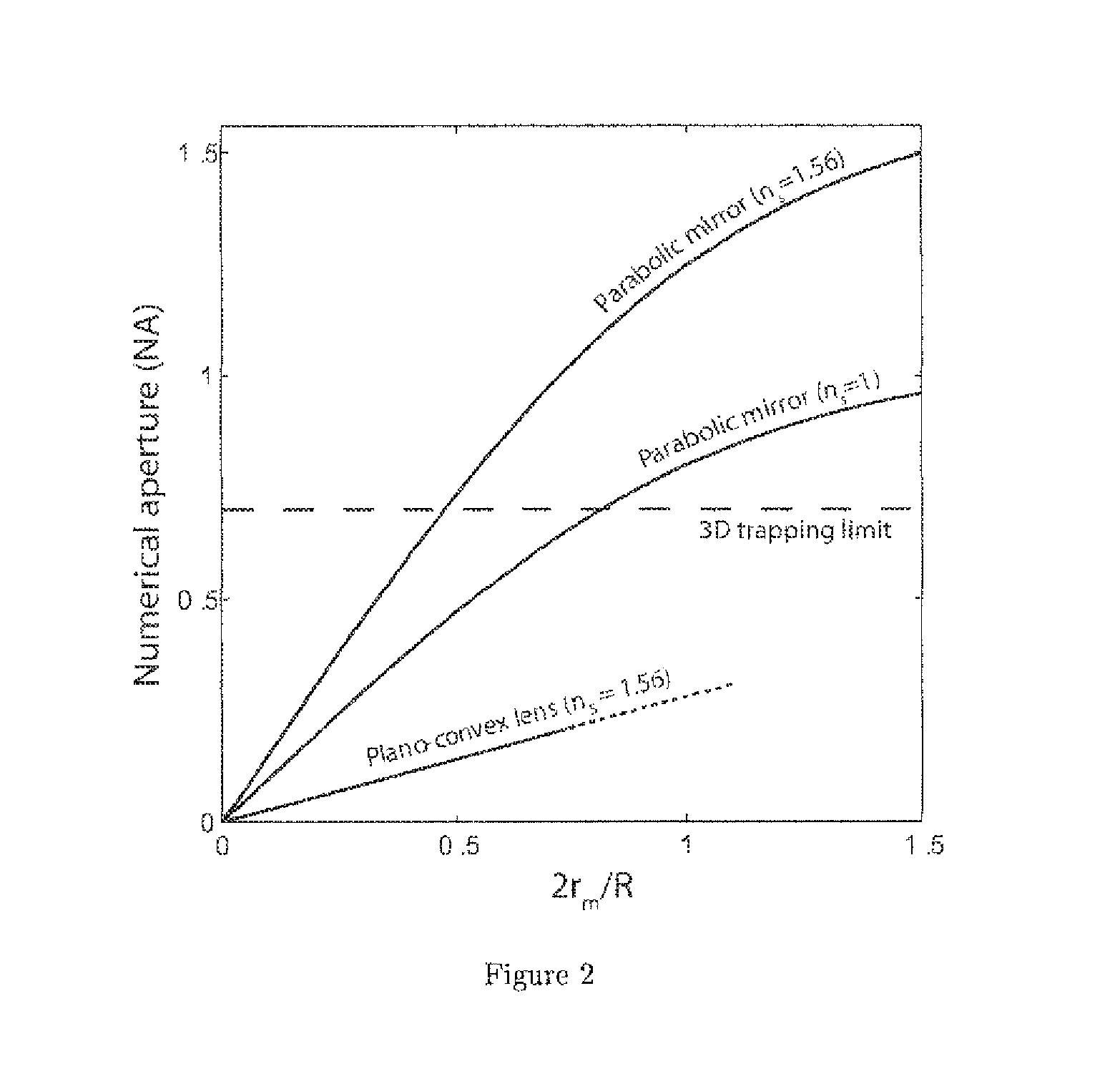Miniaturized optical tweezers based on high-NA micro-mirrors
a micro-mirror and optical tweezers technology, applied in the field of micro-meter-sized dielectric particles, can solve the problems of not showing multiple traps and probably not being able to generate such a system
- Summary
- Abstract
- Description
- Claims
- Application Information
AI Technical Summary
Benefits of technology
Problems solved by technology
Method used
Image
Examples
Embodiment Construction
6.1 Micro-mirrors as High-NA Micro-optical Components
[0033]The core of the present invention lies in the use of reflective instead of refractive or diffractive micro-optical components. While refractive and diffractive focusing micro-optical components can only achieve relatively limited numerical apertures (typically NA<0.5), reflective focusing micro-mirrors easily allow reaching very high NAs.
[0034]The micro-mirror arrays as defined in a preferred embodiment of the present invention should not be confused with electrostatically actuated micro-mirror arrays (also known as digital micro-mirror devices, DMDs). Electrostatically actuated micro-mirror arrays are composed of a matrix of flat, independently actuated tilting micro-mirrors. These are typically employed for spatially and temporally modulating a light source. In contrast, the invention embodiment below describes a fixed array of concave micro-mirrors, each micro-mirror being employed for focusing a portion of an incident el...
PUM
| Property | Measurement | Unit |
|---|---|---|
| diameter | aaaaa | aaaaa |
| sizes | aaaaa | aaaaa |
| refractive index | aaaaa | aaaaa |
Abstract
Description
Claims
Application Information
 Login to View More
Login to View More - R&D
- Intellectual Property
- Life Sciences
- Materials
- Tech Scout
- Unparalleled Data Quality
- Higher Quality Content
- 60% Fewer Hallucinations
Browse by: Latest US Patents, China's latest patents, Technical Efficacy Thesaurus, Application Domain, Technology Topic, Popular Technical Reports.
© 2025 PatSnap. All rights reserved.Legal|Privacy policy|Modern Slavery Act Transparency Statement|Sitemap|About US| Contact US: help@patsnap.com



